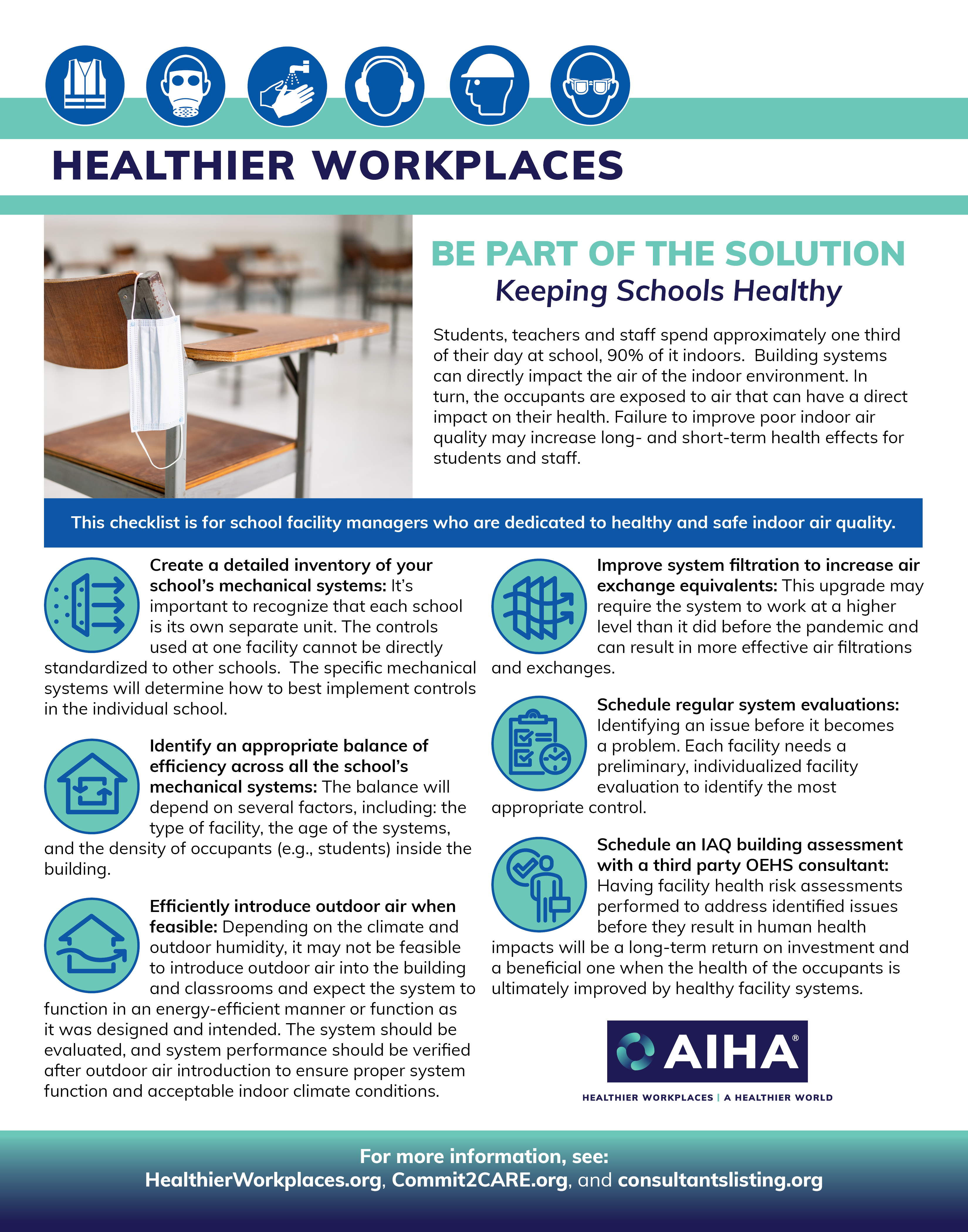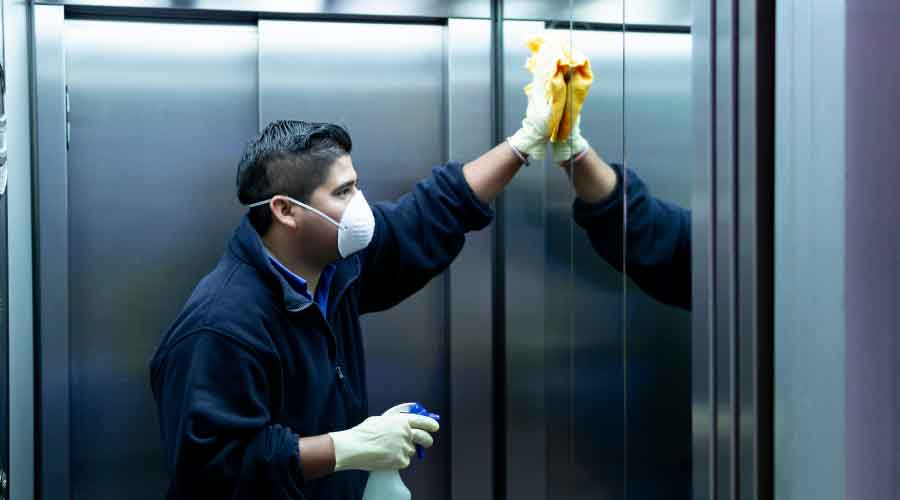
Improving Air Quality in Schools Goes Beyond COVID-19
In a post-COVID world, people are still concerned about indoor air quality in schools. February 1, 2023
By Mackenna Moralez, Associate Editor
Just three years ago the first case of Coronavirus was reported in the United Sates. Two months later, it changed the way the entire world operated. Face masks were no longer associated with Halloween, having a supply of toilet paper became sacred and “virtual learning” wasn’t just a phrase used to earn accreditation. All throughout this time, students have had to adjust to a new way of life and schooling. Despite schools making the much-needed adjustments to make their facilities safer, students are still being pulled out of class due to risk of COVID exposure.
Students, faculty and staff occupy the building for at least one-third of the days during the school week, and that number only goes up if they are involved in extracurricular activities. Building systems can directly impact the air of the indoor environment, exposing occupants to air that can have a direct impact on their health. Knowing this, failure to improve indoor air quality (IAQ) can result in increased absences from occupants, potentially disrupting the learning environment and lowering the school’s overall reputation.
“The most important thing to understand when considering effective indoor air quality improvements in schools is to recognize that each school is its own separate unit,” says Alex LeBeau, principal toxicologist and certified industrial hygienist, Exposure Assessment Consulting. “The specific controls used at one facility cannot be directly standardized to other schools. Many times, there is a wide range of school buildings built by different contractors that do not follow similar structural designs. The building materials and ventilation systems (i.e., engineering controls) used may also vary between schools. Each facility needs a preliminary, individualized system evaluation to identify the most appropriate control.”
There is a complex web of impact when evaluating the air quality of a school. Systems that are inefficiently operating or not properly maintained may contribute to quality issues that trickle down to building occupants. It is up to facilities managers to not only understand the health of their systems, but also encourage facility personnel to identify issues and report observation for corrective action. Having a facility health risk assessment performed to address identified issues before they result in human health can save money in the long run.
“A simple, basic way to begin the improvement of indoor air quality is to understand the negative impact of deferring system maintenance,” says LeBeau. “Manufacturers establish maintenance requirements for the building systems and components. Delaying maintenance of these systems, performing partial maintenance, or incorrect maintenance can directly impact the indoor environment. It is also important to recognize that there should be oversight of these activities, especially if contracting them out. The facility is under the manager’s responsibility, and they should implement a system that verifies the maintenance was performed and is done properly. There are costs to these programs, but the front-end cost is much lower when compared with the costs of a facility playing catch up once the indoor environment is negatively impacted.”

Traditionally, the facility is under the control of the facility manager, so it is important to understand that improving a school’s air quality will have a positive impact for everyone within the building, especially since poor IAQ is more understood post-pandemic. Having proactive plans in place will reduce human exposure to potential health impacting substances. These plans also make evaluating for other potential exposure sources just as important. This can include evaluating the section of building materials or furniture that does not impact the occupied space.
“At a minimum, schools should follow the manufacturer maintenance schedule for each building system,” says LeBeau. “If there is no set manufacturer maintenance schedule or if a facility manager is considering changes, upgrades, or wants to understand their current status, a baseline assessment is recommended. This baseline can be part of a comprehensive facility health risk assessment. These assessments can identify the status of current building systems, identify issues with design that were never initially evaluated and provide an outline for ensuring that the building maintains adequate health for years to come.”
Mackenna Moralez is the associate editor for FacilitiesNet.
Next
Read next on FacilitiesNet













